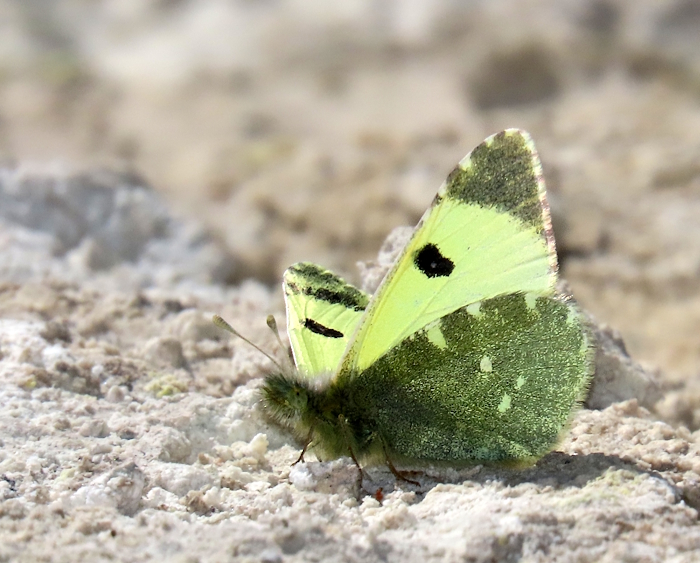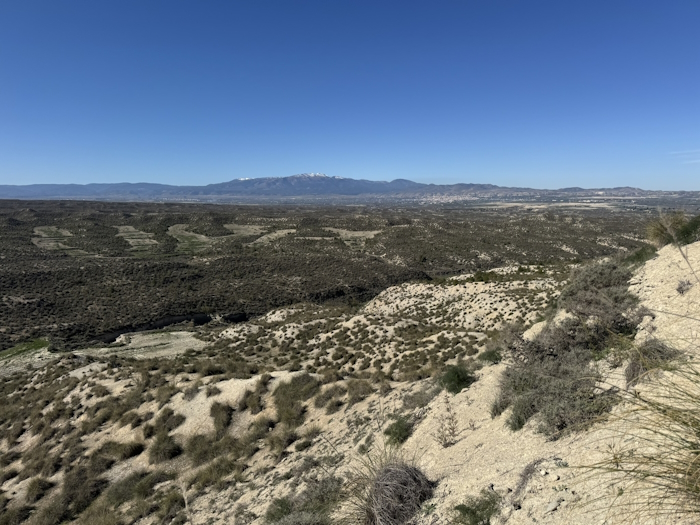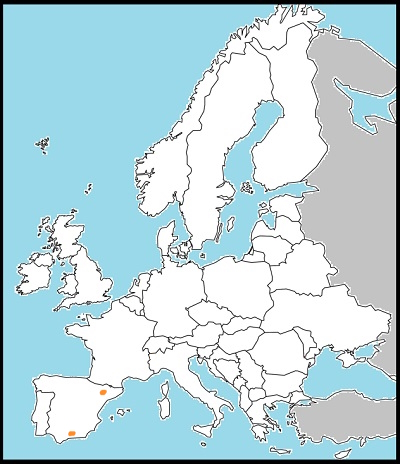Refresh page if pictures don't load fully:

Male, 30th March 2025, Baza, Spain

Male, 30th March 2025, Baza, Spain

Male, 30th March 2025, Baza, Spain

Male, 30th March 2025, Baza, Spain

Male, 30th March 2025, Baza, Spain

Male, 30th March 2025, Baza, Spain

The habitat

Distribution
This very local butterfly was only discovered in 1982, when it was understandably assumed to be an isolated population of the greenish black-tip, Euchloe charlonia (formerly, and in some publications still, Elphinstonia charlonia), found in North Africa and the Canaries. Subsequently, in 1993, it was formally described as a new taxon by the Italian entomologist, Emilio Fabiano, though he also considered it a subspecies of charlonia. Finally, in 1996, Olivares and Jimènez elevated it to specific status and genetic studies suggest it split off from charlonia about three million years ago. There are two populations, representing two subspecies: E. bazae bazae, which flies in the Province of Granada, near the town of Baza, and E. bazae iberae, which flies in the province of Huesca, in Aragón. In January 2025 a second population of E. bazae bazae was found, a little to the north of the original population.
The fact this butterfly was not known of at all until 1982 is an indication of how local it is. In March 2025 I visited the Hoya de Baza with detailed instructions on how to find it, and found it exactly and only where I had been told. Where it flies, there is no similar species. In structure and general pattern, it is similar to other members of the genus Euchloe, though the underside of the hindwing is more scantily marked. The lemon yellow colour, however, with a hint of lime, makes it unmistakable. In flight it resembles a small, bright, Colias species, though its fast and rather direct flight marks it out as different. It is particularly fond of hilltopping, and all the pictures above are of hilltopping individuals. When I saw it, it was flying with Portuguese and western dappled whites - and perhaps also green-striped whites - but it was the only one that ever settled. When it did, it basked for some seconds before taking off again.
The two subspecies are biologically distinct and use different foodplants. E. bazae uses Eruca vesicaria, while E. B. iberae uses Boleum asperum. I am told the most recently discovered population, near Orce, uses a still different plant, Vella pseudocytisus. All populations fly in two generations, from late February or March until June.